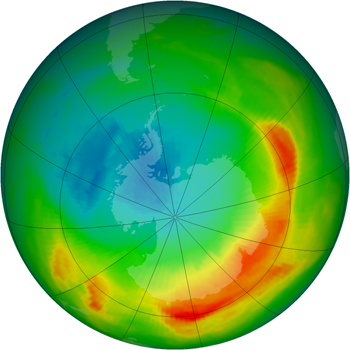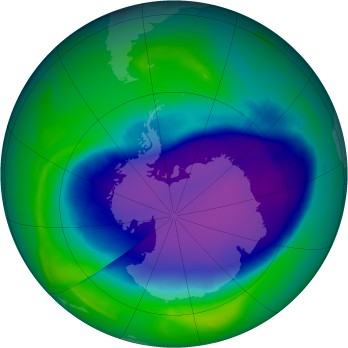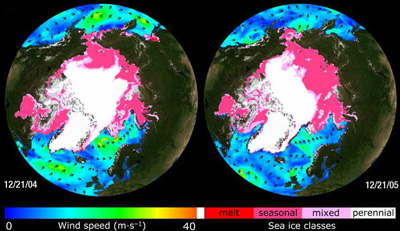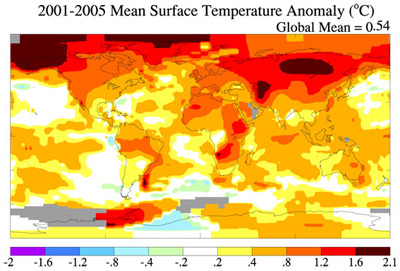|
It's the Astronomy Online non-Blog, or un-Blog.
Everyone has a blog now and since I am no follower of trends, I decided to merge the blog with the website. And I don't want to neglect the website in favor of posting on the blog.
These are the pages that were on the blog of old:
- Home
- Archive (Index of Pages)
- Me
- Current Trends
- Links
- Soho Live
Links:
Google Maps - Mars
Google Maps - Moon
HiRISE
HiRISE - MRO Imaging
Mac Singularity
Meade4M
Slackerpedia Galactica
Software for the Mac
Starry Night Online
Venus Maps
More Favorites:


































Thank you for visiting!
|
|
 |
|
The Heat is On:
The issue of the environment seems to be a hot topic this election year. While there are certainly a lot of finger pointing, one thing is certain: our world is getting warmer. This entry will briefly touch on four developments; the increasing size of the hole in our ozone, the warming of our oceans, the melting of the polar caps, and the increase of global mean temperature.
NASA's Ozone Hole Watch draws on data from six different sources to show daily progress of the ozone hole that exists over Antarctica. The unit of measure used is called the Dobson Unit which indicates the level of ozone present. The more purple there is to the images below means the less ozone.

Courtesy NASA/JPL-Caltech
When one looks at the data from this site, its clear that the size of the hole can change dramatically. This is the result of our atmosphere being dynamic - it is in continuous motion. On September 21 through September 30 of 2006, the size of the ozone hole reached a record of 10.6 million square miles.
Here is an image from the first year of NASA's Ozone Watch:

Ozone Hole - October 16, 1979 (Courtesy NASA/JPL-Caltech)
And here is an image from October of this year (2006):

Ozone Hole - October 16, 2006 (Courtesy NASA/JPL-Caltech)
The ozone hole is a significant contributor to global warming. The ozone layer is a thin layer of three-atom oxygen molecules that is very efficient in blocking ultraviolet radiation (UV) from the Sun. UV is high energy electromagnetic radiation that has the ability to break apart DNA and cause skin cancer in addition to heating the planet. A major cause of ozone depletion is the use of CFC's (Chlorofluorocarbons) which is a chemical used for coolants, solvents and propellants - like fire extinguishers, air conditioners, circuit boards and aerosols. The life span of CFC's vary from 20 to 100 years. The damage is the result of CFC's breaking apart the O3 molecule. A list of known ozone depleting chemicals can be found at the EPA website.
The Lawrence Livermore Labs in California is doing research on the effects of Sea Surface Temperatures (called SST). Using computer models and available data, the study of SST have changed from ocean specific study to more localized, hurricane forming regions. The study shows that from 1906 to 2005, 84% of SST increases result from ozone depletion and the increase of greenhouse gases produced by humans.

Hurricane Katrina (Courtesy NASA/SVS)
Hurricanes require warm waters to form; in fact, an SST of 82 degrees is all the is required. Hurricane strength is increased as the SST increases. The reasonable assumption to this is expect strong hurricanes - like hurricane Katrina - to form as a result.
A contributor to increasing SST is the melting of our polar caps. A direct result of global warming, NASA data shows the perennial ice of the Arctic has decreased 14% between 2004 and 2005. Overall decrease of perennial ice (ice that normally survives the summer) is 720,000 km.

(Courtesy NASA/JPL-Caltech)
This melting of the polar ice will do two things: increase ocean levels that will flood low-laying coastal regions and increase the overall SST.
The result of all this is perhaps the most dramatic piece of evidence to the global warming scenario, and that is the increase of the global mean temperature. NASA research shows that our climate is the warmest it has been in 12,000 years - since the end of the last major ice age.

(Courtesy NASA/JPL-Caltech)
Click on the image above to see a video of the changes in global mean temperature since 1882. While some will claim records back then may not have been accurate, there are still dramatic changes over the past 30 years.
For those who likes graphs, here is a graph demonstrating the increase in global temperature:

(Courtesy NASA/JPL-Caltech)
The ozone can repair itself and the natural carbon cycle is capable of scrubbing out excess greenhouse gases, but we must allow this to happen. Damage to the ozone must stop and significant reduction in the release of greenhouse gases must be enforced.

(Courtesy NASA/JPL-Caltech)
Climate changes affect more than just global temperatures and increase hurricane strength, these changes affect plant and animal life. In fact, studies show a gradual migration towards the pole. In 2003, a study appeared in Nature magazine that demonstrated 1700 species of plants and animals are migrating north at a rate of 6 km per decade in the later part of the 20th century. The problem is this migration cannot keep up with the changes in global temperature.
We can certainly petition our government to address this important issue, but the solution ultimately lies with us. Recycle, take public transportation and support alternative energy - mainly solar and wind power. Be an example to others and educate your friends and family. This is a problem that will only get worse if we do nothing.
References:
NASA Study Finds World Warmth Edging Ancient Levels
NASA Sees Rapid Changes in Arctic Sea Ice
Researchers link human activities to rising ocean temperatures in hurricane formation regions
NASA and NOAA Announce Ozone Hole is a Double Record Breaker
NASA Ozone Hole Watch
Next Post | Previous Post | Back to Top
|
|

